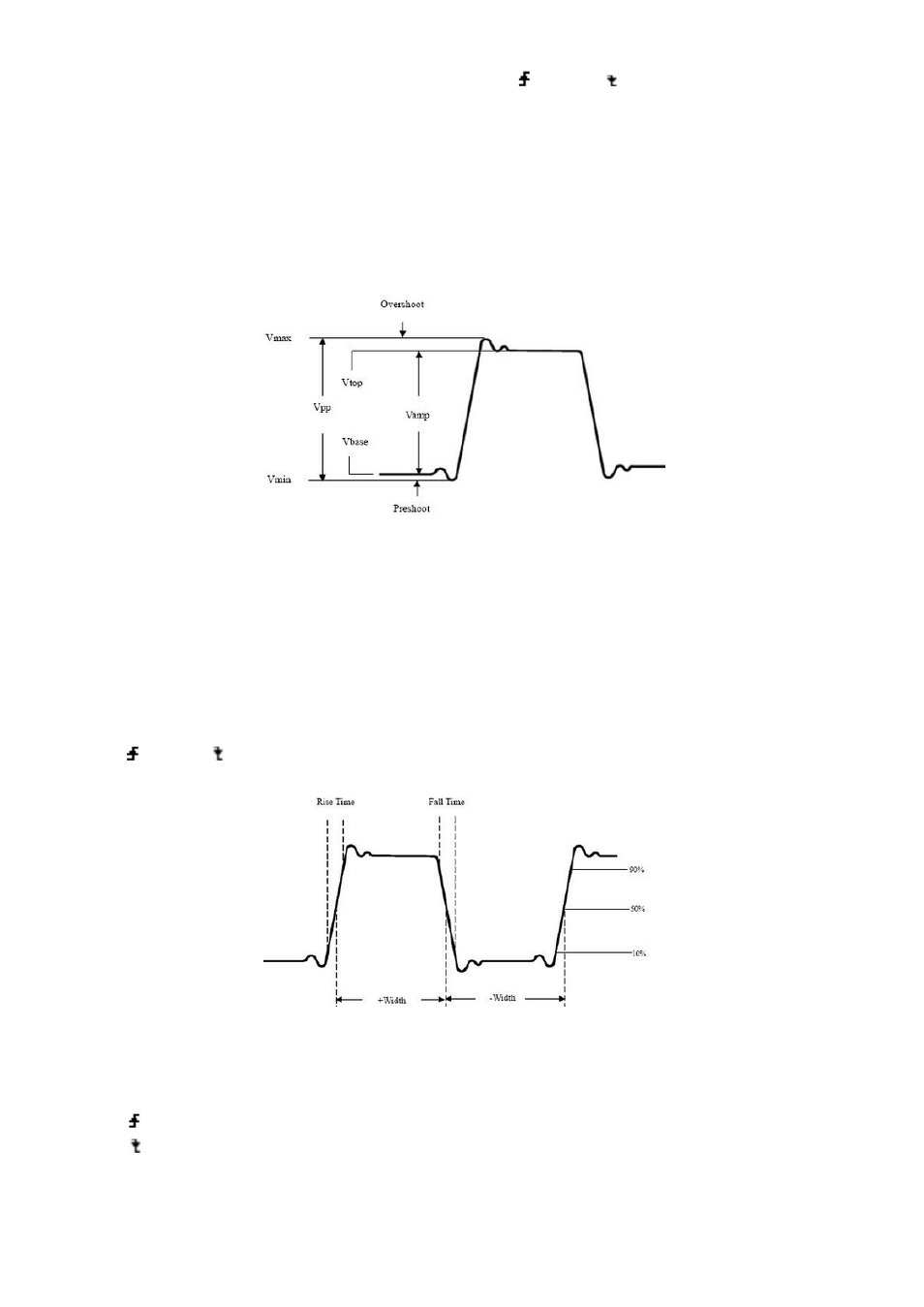OWON VDS Series User Manual
Page 20

Automatic measurement works under this function. Totally twenty kinds of measurements. At most 8 types of measurements could be displayed
on the bottom left of the screen. The oscilloscopes provide 20 parameters for auto measurement, including Vpp, Vmax, Vmin, Vtop, Vbase, Vamp,
Vavg, Vrms, Overshoot, Preshoot, Freq, Period, Rise Time, Fall Time, Delay A→B , Delay A→B ,+Width, -Width, +Duty, -Duty.
Show All: Choose channel from the list on the right side of "Show All", a pop-up window will show all the measurement values.
Add measurement: Check the channel and measurement type. Measurement results display on the bottom left. You can add 8 types at most
for each channel. If 8 types are exceeded, the former option will be canceled. The measured values of two channels can be displayed
simultaneously.
Remove measurement: Uncheck the measurement type to remove it. Click "Remove All" to remove all measurements.
The automatic measurement of voltage parameters
The VDS series oscilloscopes provide automatic voltage measurements including Vpp, Vmax, Vmin, Vavg, Vamp, Vrms, Vtop, Vbase,
Overshoot and Preshoot. Figure below shows a pulse with some of the voltage measurement points.
Vpp: Peak-to-Peak Voltage.
Vmax: The maximum amplitude. The most positive peak voltage measured over the entire waveform.
Vmin: The minimum amplitude. The most negative peak voltage measured over the entire waveform.
Vamp: Voltage between Vtop and Vbase of a waveform.
Vtop: Voltage of the waveform's flat top, useful for square/pulse waveforms.
Vbase: Voltage of the waveform's flat base, useful for square/pulse waveforms.
Overshoot: Defined as (Vmax-Vtop)/Vamp, useful for square and pulse waveforms.
Preshoot: Defined as (Vmin-Vbase)/Vamp, useful for square and pulse waveforms.
Average: The arithmetic mean over the entire waveform.
Vrms: The true Root Mean Square voltage over the entire waveform.
The automatic measurement of time parameters
The VDS series oscilloscopes provide time parameters auto-measurements include Frequency, Period, Rise Time, Fall Time, +Width, -Width,
Delay 1
→2 , Delay 1→2 , +Duty and -Duty.
Figure shows a pulse with some of the time measurement points.
Rise Time: Time that the leading edge of the first pulse in the waveform takes to rise from 10% to 90% of its amplitude.
Fall Time: Time that the falling edge of the first pulse in the waveform takes to fall from 90% to 10% of its amplitude.
+Width: The width of the first positive pulse in 50% amplitude points.
-Width: The width of the first negative pulse in the 50% amplitude points.
Delay 1
→2 : The delay between the two channels at the rising edge.
Delay 1
→2 : The delay between the two channels at the falling edge.
+Duty: +Duty Cycle, defined as +Width/Period.
-Duty:-Duty Cycle, defined as -Width/Period.
16
